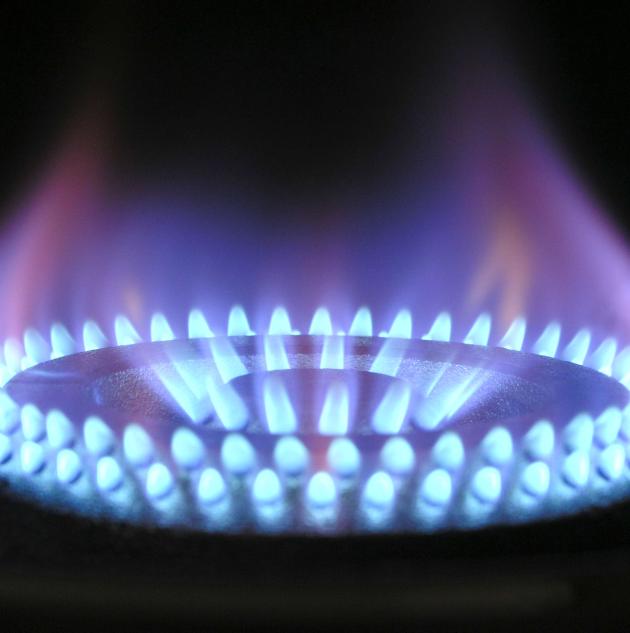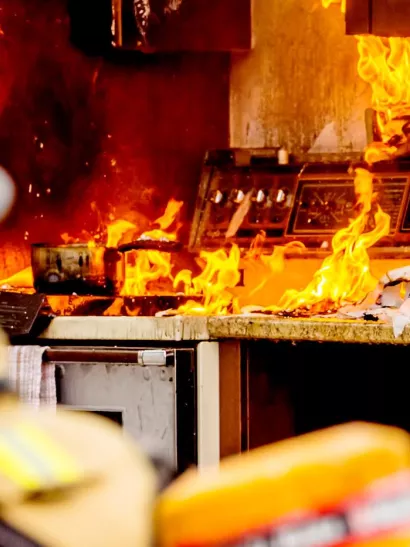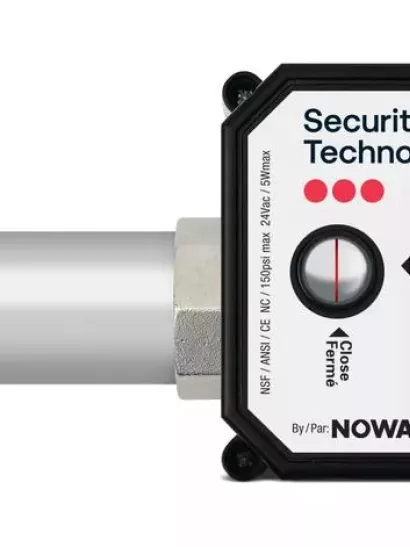Carbon monoxide, an invisible enemy
It’s Friday night and you’re home for the weekend. You hand your keys to the toddler to play with. Later, you cozy up for a movie marathon in the basement. But if your fireplace’s pilot light hasn’t been maintained, or your child hit the remote car starter by accident and your vehicle is running overnight in the attached garage, it’s a recipe for carbon monoxide (CO) poisoning —the silent killer.

What is carbon monoxide (CO), and what causes it?
Carbon monoxide is produced when carbon-containing fuels burn, but not completely. For example, a yellow or orange stovetop flame means the gas may not be burning hot enough, so carbon monoxide may be present (the flame should be blue). CO can come from all appliances and tools in your home that use gas, oil, propane, kerosene, coal, wood, and charcoal. Think stove, furnace, fireplace, car in a closed garage, water heater, clothes dryer, generator, gas lawnmower, gas weedeater, burners, kerosene heaters, propane barbecue — anything that uses gas.
For the symptoms to present themselves and the effects to be deadly, the gas must reach high enough levels in a poorly ventilated space. The time it takes to become lethal depends on what’s burning, how much there is, how quickly it’s burning, and the size and air-tightness of the space the gas is in. The science is complicated according to this National Centre for Biotechnology Information research, but to summarize, 800 ppm can be fatal between two to three hours of exposure for a healthy adult and obviously way less for a child.
How dangerous is Carbon Monoxide poisoning?
As the levels in the air, you’re breathing rise, CO poisoning can start with symptoms like nausea and headaches, lead to unconsciousness and convulsions, and be fatal when there is too much exposure for too long. In Canada, the Ontario Association of Fire Chiefs estimates that CO poisoning kills around 50 people every year, and the Centre for Public Safety shows over 200 hospitalizations a year.

Experts in Gas Leak Detection

If you can’t see, smell, or taste carbon monoxide, how do you monitor it? Placing Securitas Technology CO detectors in strategic spots in your home will alert you the same as a smoke detector does. Our detectors’ electrochemical cell reacts immediately and triggers an alarm when the CO concentration in the air exceeds the safe amount. That alarm also goes to our 24/7 monitoring station which will:
- Contact you at home to alert you to leave the house immediately
- Simultaneously call the fire department
- Send a notification to your mobile phone so if you’re not home, you’ll be informed

There’s no such thing as short term when it comes to quality and safety. We continue to add to and evolve our offerings in electronic security. We're recognized for meeting the highest industry standards around the world.
We're certified by the Central Station Alarm Association and the Homologated Bureau of Private Security (BSP).
Every one of our employees is committed to delivering on high standards. When it comes to monitoring, we have two ULC (Underwriters Laboratories of Canada) certified monitoring stations in Canada, offer seamless 24/7 protection, and we’re vigilant about prevention.

If you can’t see, smell, or taste carbon monoxide, how do you monitor it? Placing Securitas Technology CO detectors in strategic spots in your home will alert you the same as a smoke detector does. Our detectors’ electrochemical cell reacts immediately and triggers an alarm when the CO concentration in the air exceeds the safe amount. That alarm also goes to our 24/7 monitoring station which will:
- Contact you at home to alert you to leave the house immediately
- Simultaneously call the fire department
- Send a notification to your mobile phone so if you’re not home, you’ll be informed

There’s no such thing as short term when it comes to quality and safety. We continue to add to and evolve our offerings in electronic security. We're recognized for meeting the highest industry standards around the world.
We're certified by the Central Station Alarm Association and the Homologated Bureau of Private Security (BSP).
Every one of our employees is committed to delivering on high standards. When it comes to monitoring, we have two ULC (Underwriters Laboratories of Canada) certified monitoring stations in Canada, offer seamless 24/7 protection, and we’re vigilant about prevention.
FAQs
Common sources of gas inside a home include several types of non-electric heaters (oil, gas, fuel oil, propane, and natural gas) as well as gas ovens and car exhausts in a closed garage.
Yes, at 800 PPM in the air, you will experience dizziness and a headache, eventually feel nauseous and within an hour, you will fall unconscious. Between two to three hours, there is a risk of death. A CO detector could therefore warn you as soon as CO is detected in the air to prevent this situation.
No, carbon monoxide is an odorless and colorless gas, so it is almost impossible to detect.
Get in touch today to obtain a personalized quote on a gas leak detection system
Monoxide detectors are frequently bundled with

Fire Prevention
Two styles dominate the smart home smoke detector market: ionization smoke alarms and photoelectric smoke alarms.

Water Leak Detection
As part of the Securitas Technology Smart Home system, you can integrate a water leak sensor and a remote water shut-off valve.

Intruder Alarm System
Your home is your safe place. A home security system is the best way to do that.




















